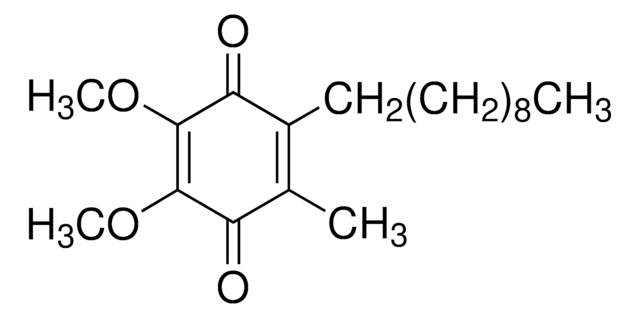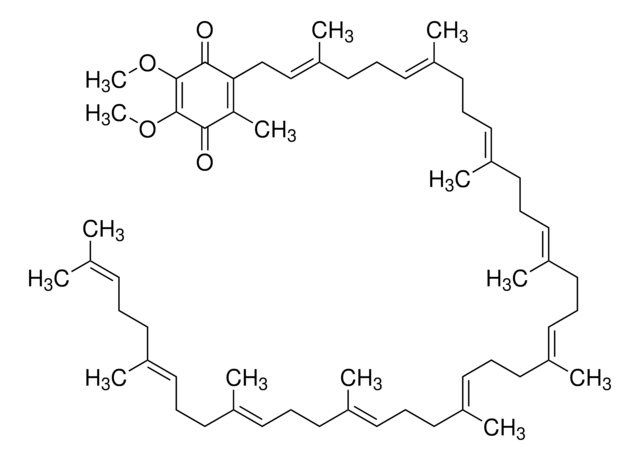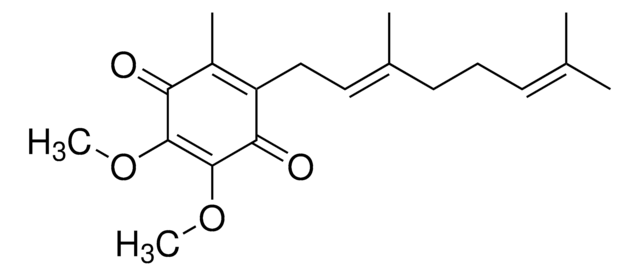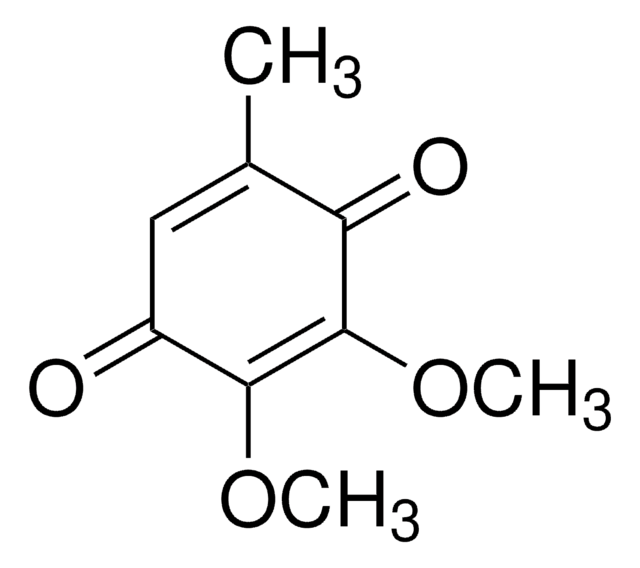C7956
Coenzyme Q1
≥95%
Synonym(s):
2,3-Dimethoxy-5-methyl-6-(3-methyl-2-butenyl)-1,4-benzoquinone, Ubiquinone-1, Ubiquinone-5
About This Item
Recommended Products
Assay
≥95%
form
liquid
storage temp.
−20°C
SMILES string
COC1=C(OC)C(=O)C(C\C=C(\C)C)=C(C)C1=O
InChI
1S/C14H18O4/c1-8(2)6-7-10-9(3)11(15)13(17-4)14(18-5)12(10)16/h6H,7H2,1-5H3
InChI key
SOECUQMRSRVZQQ-UHFFFAOYSA-N
General description
Application
Biochem/physiol Actions
Other Notes
Storage Class Code
10 - Combustible liquids
WGK
WGK 3
Flash Point(F)
Not applicable
Flash Point(C)
Not applicable
Personal Protective Equipment
Certificates of Analysis (COA)
Search for Certificates of Analysis (COA) by entering the products Lot/Batch Number. Lot and Batch Numbers can be found on a product’s label following the words ‘Lot’ or ‘Batch’.
Already Own This Product?
Find documentation for the products that you have recently purchased in the Document Library.
Articles
Learn about the four membrane-bound protein complexes that make up the electron transport chain metabolic pathway supplying energy as ATP for cellular respiration.
Our team of scientists has experience in all areas of research including Life Science, Material Science, Chemical Synthesis, Chromatography, Analytical and many others.
Contact Technical Service







